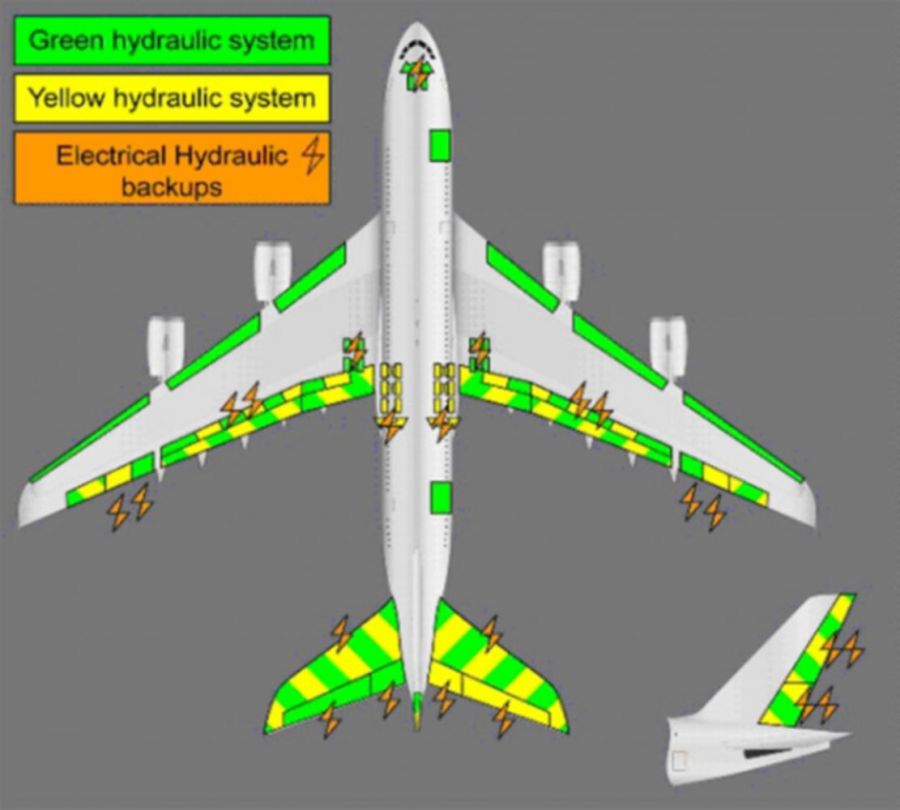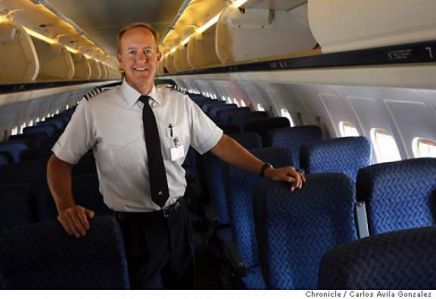Pilots must also have a "type rating" for the specific aircraft type that they fly. It could roughly be compared as the driver that drives a coupe, must get a type rating to drive a station wagon.
Ignorance.
Ignorance is one of the things that can make one afraid of flying. Therefore, it may be beneficial if you learn yourself what is happening during a flight. Here below I give a brief explanation of what happen during a flight. This may vary slightly depending on the aircraft , airport and procedure.
Sometimes one hears some "jet engine" noise when you walk on board, it's not the engines, but an APU unit that can be heard. An APU is a turbine generator that provides power, fresh air to the cabin and compressed air to start the jet engines.
If the aircraft is pushed backwards from the gate, it's usually a tractor that performs this task.
Here it is very normal to remove the air conditioning in the cabin, to use the air pressure to start the jet engines, which will then be started one by one.
If you hear a "ding" and the cabin light flashes, it is the aircraft engine generator that switches on in stead of the APU supply.
When the engine is started, it is very normal that the APU device is turned off. Sometimes the APU is tuned off after takeoff.
The pilots are now trying the flight controls, which can be seen as a movement of wing surfaces. Flaps and slats are extended. Standing takeoff is the most powerfull, here the plane is kept in the brakes on the runway while the engines spools up , then the brakes are released and the plane accelerate fast. Even if you think that the plane is running in a long distance, I can guarantee you that the runway is long enough. Power, weight , temperature and condition of the runway surface is taken into account to calculate the initial length to a safe takeoff and landing.
The plane will take off and the wheels will be drawn up in the wheel well. Maybe the air conditioning / air nozzle first turns on here after the plane has taken off. Flaps and slats are retracted when the plane reaches higher speeds.
You can hear the jet engines slow down even if the plane still climb, the thrust is adjusted by: takeoff thrust, climb thrust and when the desired altitude is reached, then cruise thrust is selected. The pilot can always overbooste the engines more than 100% briefly in a emergency situation to get more power for speed or climb. A normal start is often performed with a calculated reduced engine power to save fuel and wear, all within a large safety margin.
If an fault occurs and an engine shots down under the start, there is still enough power to perform a safe takeoff. The plane climb less rapidly and will then follow a safe "emergency" route where there are no obstructions such as tall skyscabers.
The pressure in the cabin is regulated on the way up and down, which can provide earplugs.
Long time before landing you will be able to hear the jet engines throttle down, that makes the plane "float" as far as possible to the aerodrome, it saves fuel.
Close to the landing the slats, flaps and landing wheels are activated.
During the approach, the motors can well spool up and down, it is because the pilot using the engines to control the aircraft's altitude. When the plane lands then you hear the engine revs up again, thise are reverse thrust, which means that the engine delivers pressure opposite direction of flight, this is to slow the aircraft down in speed, and when low speed is reached, the mechanical wheel brakes is applied. The aircraft can also be brought to a halt only with the mechanical brakes.
Some airlines choose to taxi the aircraft to the gate on only one engine, it is to reduce noise and fuel consumption.
As you can see, there are many things going on during a flight, which can give unfamiliar sounds, but it is quite normal that there are some sounds when the different components are activated and there is no danger in this.
You can always keep an eye on cabin crew if they act normal and do their work then everything is under control.


